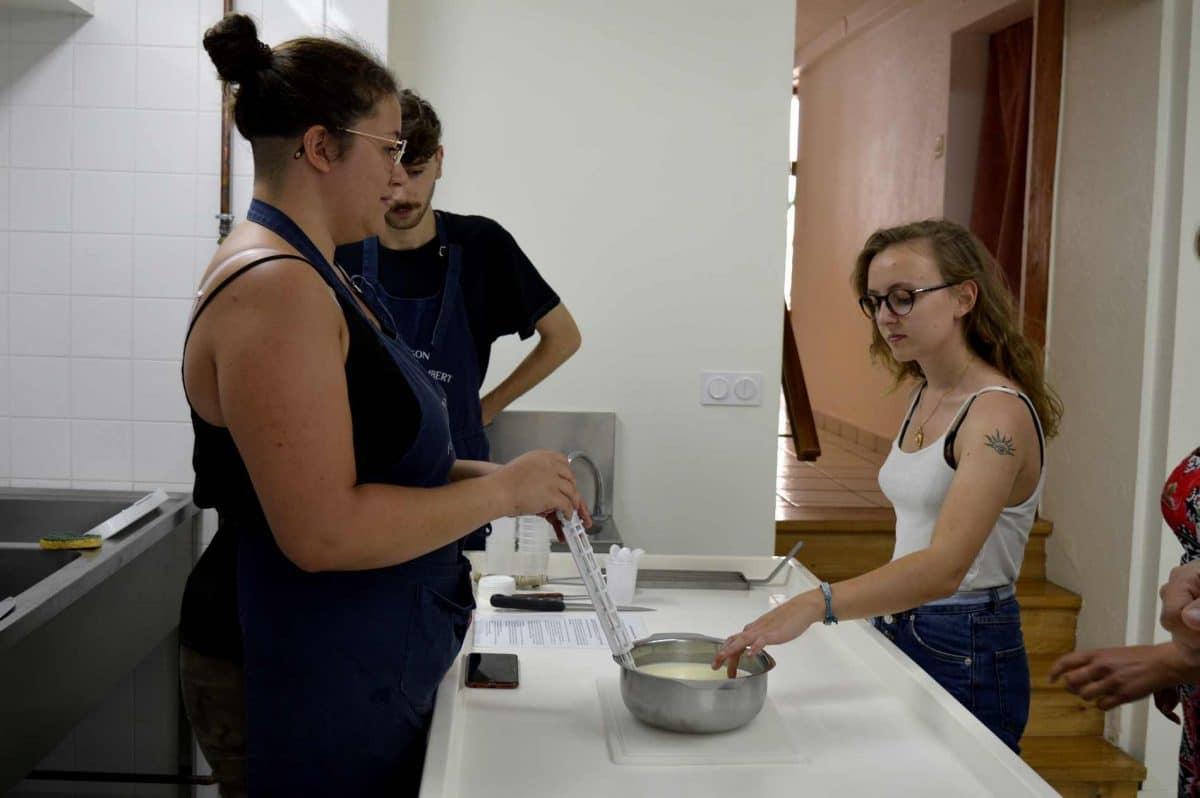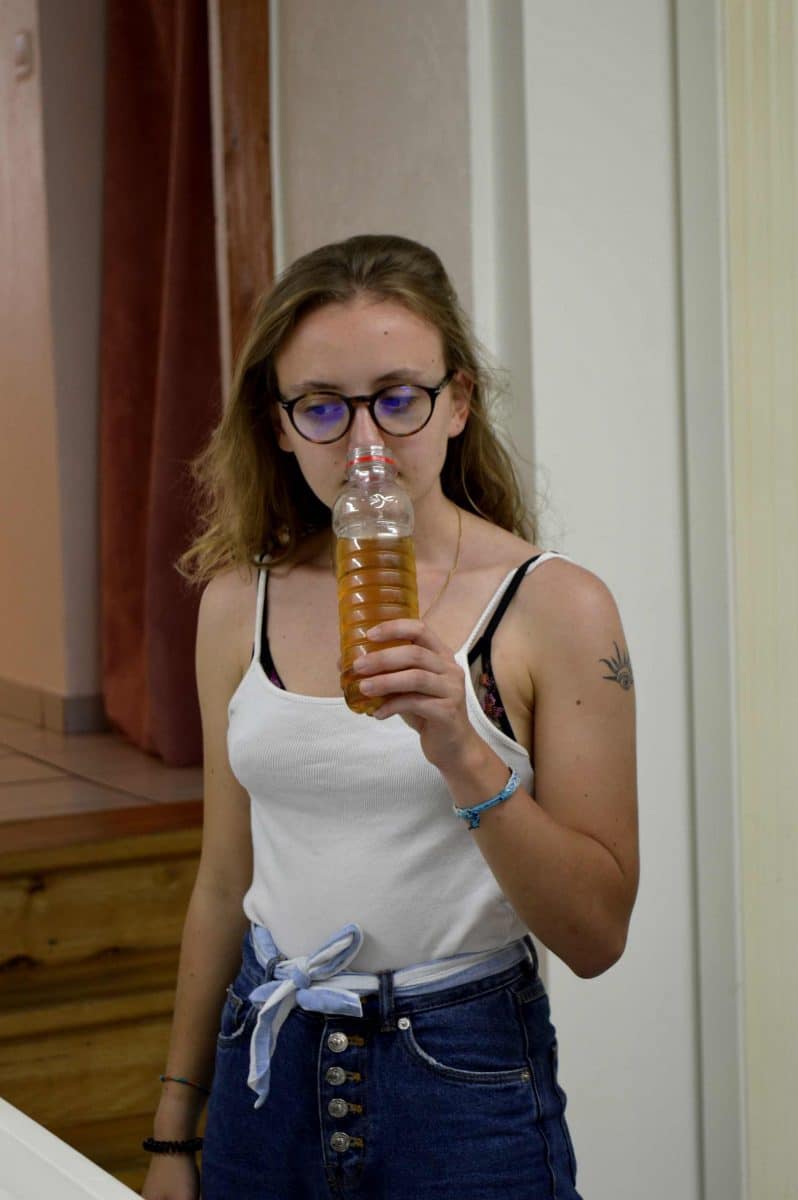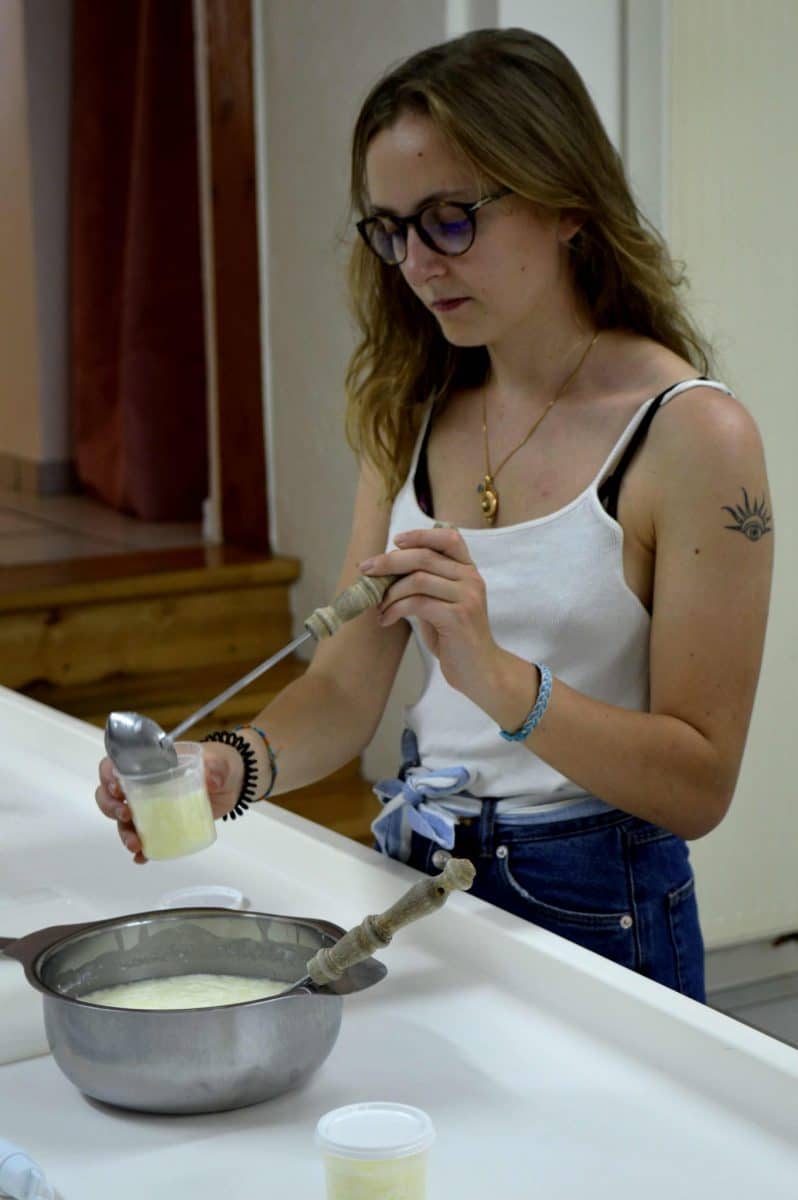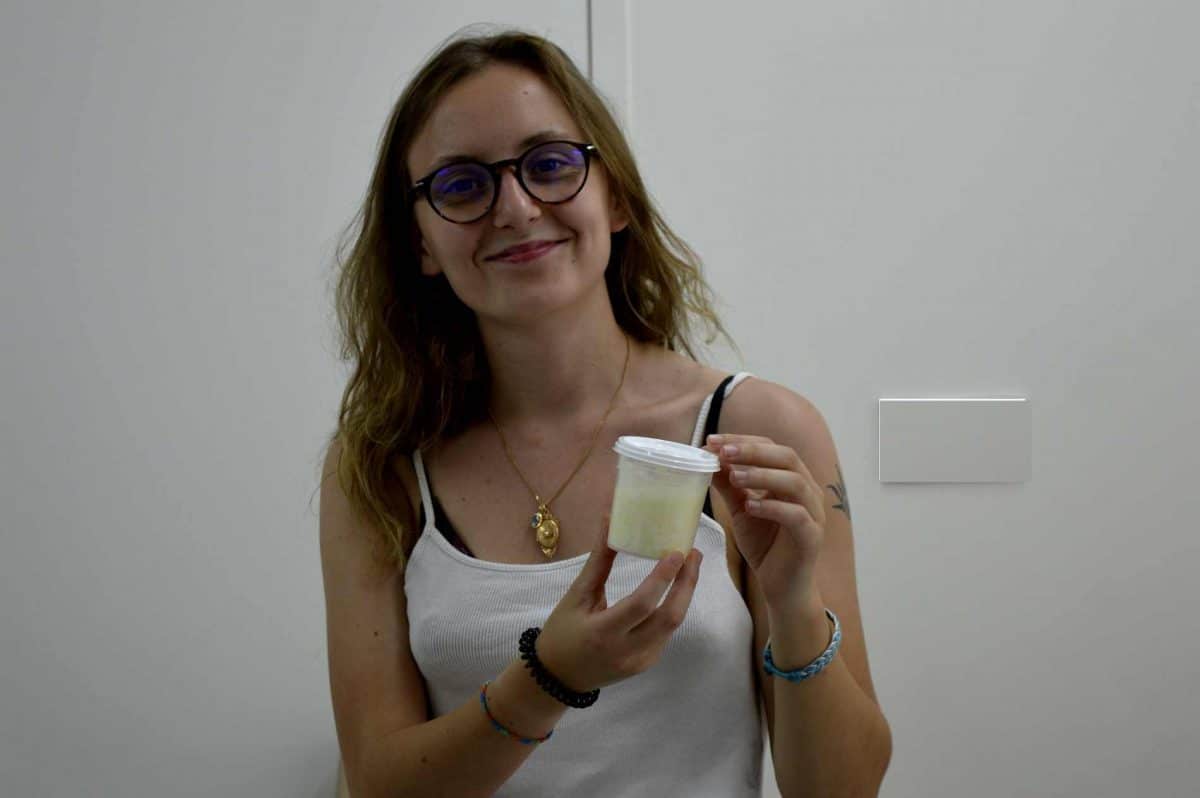Une tradition culinaire d’Ambert : la fourme
This week, I continue my adventures with the composition of a cheese at the Maison de la Fourme in Ambert.
When I was told about Ambert, my first thought was, of course, for La Fourme. Even if I admit that my little favorite is the Saint-Nectaire, I leave it aside, for an afternoon, to discover the specialties of Ambert. In a small street in downtown Ambert, I find this small stone house, the Fourme House. Émeline Beraud guides me to theworkshop of cheese design.

Once inside, I see a bowl full of milk on the table. Nothing surprising so far. For someone who doesn't drink milk, my mouth is still not watering. Émeline brings a bottle filled with an orange liquid to the table. It must be said that the only thing I know is that it takes milk to make cheese. So this flow in the little plastic bottle doesn't mean anything to me.

Rennet you say? Good game. It is surely recognized by its pungent smell. It's true that by putting my nose in this bottle I quickly come to regret it. A retching shoots through my stomach. Indeed, this unsavory liquid actually comes from the fourth stomach of the calf, the abomasum. A family accompanies me for the animation and each one our turn, we have more or less the same reaction. This liquid must be poured into the milk, once the latter is at room temperature. I then take my small ladle to pour the rennet.

Rennet to scale milk
Just think that it's like oil poured into a cake batter, and you quickly get used to the smell. During the few minutes that follow, wait for the rennet to scale the milk. These are minutes during which Émeline tells the story of La Fourme. Its origin, its evolution, and its differences with other cheeses. She takes the opportunity to go around the table to ask us what are our favorite cheeses. Yes, I take this opportunity to quote again my little Saint-Nectaire, also from Auvergne so I don't go off the beaten track. Once the rennet has set well in the milk, it is ready to give us a cheese strainer which we take turns pouring into a small pot. Too bad the workshop is not more complete in terms of initiations.
Unfortunately I was not able to taste this famous cottage cheese which, with the heat wave, certainly turns the milk. I might as well tell you that I didn't want to take any risks… History will want to remember that it must have been very good.

Lucile Brière for La Gazette de Thiers and d'Ambert


